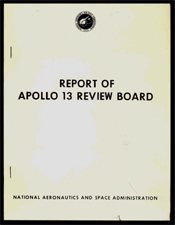By Jo Gunderson
While I was the Deputy Director of the Systems and Cost Analysis Division in the Office of the Chief Financial Officer, I often got requests to support reviews. Since our organization largely did reviews for a living, participating in non-advocate reviews was normally a “given” for major missions. On smaller missions such requests were usually meant to show that the project had a member of the Comptroller’s staff on the review team, thus implying that all was well and that a seal of approval was somehow being conveyed.
One spring, I got a call from a Project Manager of an in-house spacecraft project, asking that I personally support his Confirmation Review. I didn’t know the Project Manager and was not terribly familiar with his project. The project was substantially below the threshold of things that I normally touched, and I had several major reviews under way. I offered to recommend Center-level resources, or failing that, to identify a staff member who might be able to provide the support. The Project Manager was less than enthusiastic about either alternative and asked that I re-examine my calendar and get back to him.
When my plate was too full with the larger programs, I often suggested that other agency analysts and estimators help fill in on the smaller programs. Failing that, one of our staff normally got called in and “provided the opportunity to excel” in support of the smaller program. I polled our staff to see who might be available. The Project Manager called again. So far no one had stepped forward. The Project Manager called a few more times. I pointedly suggested to the staff that finding the time to support the review would be a “very good thing.” When the Project Manager called again, I was just plain worn down and finally agreed to do the review myself.
I arrived at the appointed hour, fully prepared to be under-whelmed for several days. There was an enormous table set up for the review team and I thought that the size of the team might be a little large, given the relatively modest size of the project.
Moving further into the room, I could see the nametags placed on the table. I nearly choked after realizing that I was seated between several engineers with NASA–wide reputations. Major players from various NASA Centers populated the entire review team. In addition, the team included names that I recognized (but had not met) from other agencies. The heavy guns had all been called out. I renewed some acquaintances and collected business cards as I did a little recruiting for other review teams that I needed to assemble.
The project team seemed to be very young. As we began, I wondered how they might fare with such a seasoned and salty review team. The review, however, proceeded relatively smoothly. The review team asked tough, pointed questions. The crusty review board pushed the project hard, but the in-house project team had dotted every “i” and crossed every “t”. They provided answers immediately, produced detailed drawings, and in the end very few actions were assigned.
In ten years of reviewing programs, I had never encountered a project that was as complete at that point in its lifecycle. All design space was closed. Performance trends were available for all critical elements. All project documentation was signed, and TBDs (To Be Determined) were notably absent in plans that would not be implemented for months.
Although the review team made a few recommendations, it was clear that all members were favorably disposed. The recommendations were primarily for “confidence building” or of the “lessons learned” nature. Needless to say, the Project was confirmed to proceed and subsequently proved to be a total success.
While working on an Agency-level task several years later, I got to know the Project Manager well enough to ask why he had been so single minded about having me sit on that review board. His reply illustrated why he had been successful on all of his projects.
“It was simple,” he said. “I had to have the review. It was a very challenging project. I needed to know if there was anything that I had overlooked and to do that, I needed to call down the fire on myself. So I worked to recruit the best of the best for the review team. I asked around and your name kept coming up as a really tough reviewer.”
Lesson
- As a Project Manager, you are often required to do things that seem to be of limited value to the project. If you are to succeed, you need to look for ways to realize value from even those things that are “done to you.” By assembling an absolutely terrifying review board, the project manager assured that the project would benefit, rather than just settling for “checking the box.” Today’s term for that approach is using “Reviews as a Resource.”
Question
Bringing down the fire on oneself is obviously one way to find out if you’ve crossed all the t’s and dotted all the i’s, but is this a practice that could also backfire for you? Describe that kind of scenario and note the causes that would create it.
Search by lesson to find more on:
- Reviews









